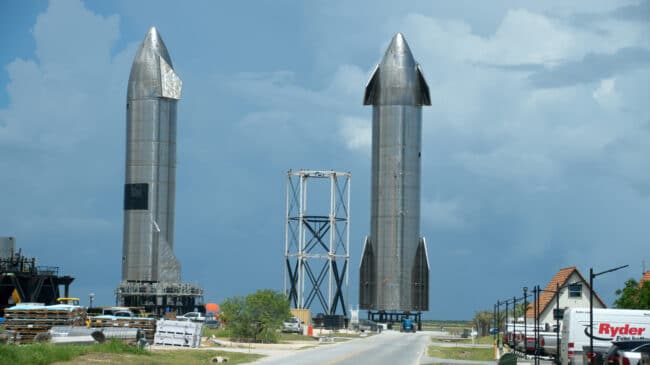Space exploration has always been expensive, but recent advancements by private companies like SpaceX are revolutionizing the industry. One of the most significant recent developments is SpaceX’s Starship, which promises substantial cost savings compared to alternative launch options due to the reusability of both the booster and the upper stage.
As Starship’s Starship continues to improve and technology continues to advance, the National Aeronautics and Space Administration’s (NASA’s) decision to use the much costlier Space Launch System, SLS, for the Artemis moon landing program will end up costing the agency (and taxpayers) billions of dollars more than necessary.
SpaceX has been one of the leading firms innovating in space since 2008 with the launch of Falcon 1. Starting with the first reusable booster (SpaceX’s Falcon 9), SpaceX’s Starship has continued to innovate by using cost-saving design principles. Starship is designed to be a fully reusable launch system for both stages, substantially reducing costs. Elon Musk, the founder of SpaceX, has stated that the cost of a Starship launch could eventually be as low as $10 million, though the latest test launch was closer to $100 million. SpaceX has come a long way since the Falcon 9’s development, as shown in Table 1 below.
Starship’s launch on Oct. 13 marked a significant milestone for the rocket, as the booster stage returned to the launch site and was retrieved by the launch tower—a world first.
By contrast, NASA’s Space Launch System is a traditional expendable launch system, meaning both stages must be replaced for successive launches. Since its inception in 2011, NASA has spent approximately $11.8 billion on developing the SLS under contracts with Boeing, Northrop Grumman, United Launch Alliance, and Aerojet Rocketdyne. Each SLS launch is estimated to cost around $2 billion. Because the SLS is not reusable, the cost per launch dramatically increases.
A Government Accountability Office (GAO) report found that the time to produce each successive vehicle for subsequent Artemis launch program is increasing, and when a project is delayed, its costs rise even more. A more detailed comparison of the costs and features of the SLS and Starship can be found in Table 1.
Table 1: Space Launch System vs SpaceX Starship Comparison
| Feature | Space Launch System | Starship |
| Developer | Boeing, Northrop Grumman, United Launch Alliance, Aerojet Rocketdyne | SpaceX |
| Height | 98-111 meters (depending on mod) | 120 meters |
| Diameter | 8.4 meters | 9 meters |
| Mods* | Block 1 Crew/Cargo, Block 1B Crew/Cargo, Block 2 Crew/Cargo | HLS (Crew), Cargo, Lunar Lander, Tanker |
| Stages | 2.5 | 2 |
| Payload Capacity | 70,000-130,000 kg to low Earth orbit, 27,000-43,500 kg to Trans-Lunar Injection | 100,000-150,000 kg orbit dependent |
| Payload Volume | 988 cubic meters | 1,083.5 cubic meters |
| Development Cost | $25 billion | $5 billion |
| Cost per launch | $2 billion | $100 million (currently, $2-$10 million is the target)** |
| Reusability | Expendable/Not reusable | Booster reusable (currently, full reusability is the target)*** |
*Mods refer to different configurations for both the SLS and Starship. For example, SLS Block 2 Crew/Cargo differs in capabilities to SLS Block 1 Crew/Cargo, though both can carry crew and cargo.
**Source for $100 million figure: Greg Heilman, “How much money does Elon Musk’s Starship Program Cost?” Diario AS en.as.com, March 14, 2024.
***Starship’s projected goal is to be fully reusable, but it hasn’t reached that goal yet. SpaceX has stated they plan to attempt their first upper-stage return landing in 2025 following the successful Oct. 13 Super Heavy booster recapture.
Between the two options, Starship has higher payload capacity, higher payload volume, a substantially lower cost per launch, and was far less costly to develop than the SLS. The aim for Starship to be reusable would dramatically reduce costs compared to the Space Launch System and reduce mission turnaround time compared to an SLS launch, which necessitates building new launch vehicles from scratch every time.
If realized, the cost savings associated with Starship could potentially revolutionize space exploration. Lower launch costs would mean more missions could be undertaken within the same budget, allowing for more frequent and diverse exploration activities. This could accelerate the timeline for ambitious projects, such as Mars exploration and establishing lunar bases.
If these reduced costs are fully realized, the barrier to entry for businesses interested in exploration and resources found on the Moon would be lowered. Some companies in the United States and China are looking to access the Moon’s supply of regolith (essentially lunar soil, usable for orbital and lunar construction) and may find Starship’s value a major cost-saver compared to alternative launch options.
Even before it’s scaled to full reusability, SpaceX’s Starship’s current cost per launch is just five percent of the cost of an SLS launch. The successful reusability of Starship could be a key factor in reducing launch costs, making space more accessible and allowing for more frequent missions.
While the SLS is a powerful rocket, its high cost and expendable nature limit its potential impact on space exploration and maximize its negative effect on NASA’s budget.
As SpaceX continues to develop and refine Starship, the cost savings and increased efficiency could pave the way for a new era of space exploration, making ambitious projects like Mars exploration more feasible and opening up space to a broader range of participants. NASA should look to Starship for future launches, especially if SpaceX delivers on its performance and cost-reduction promises.

